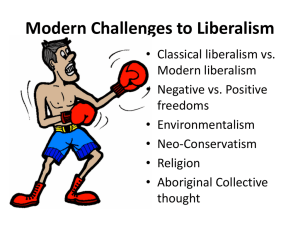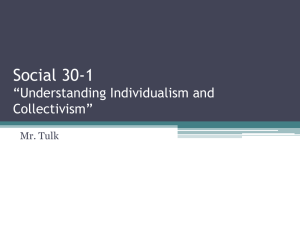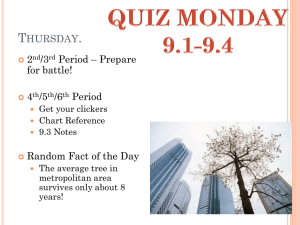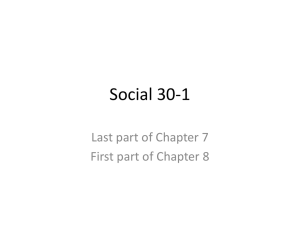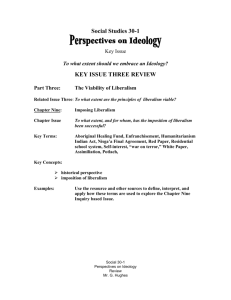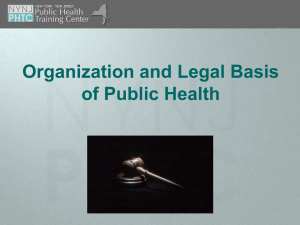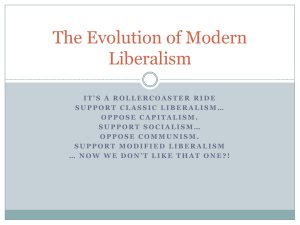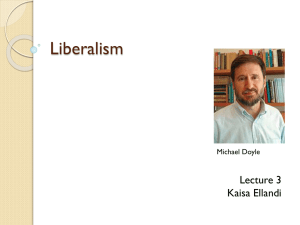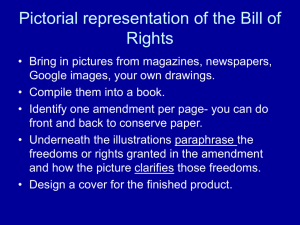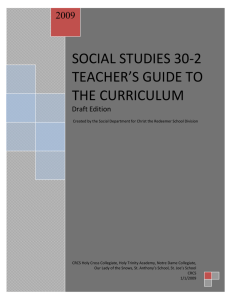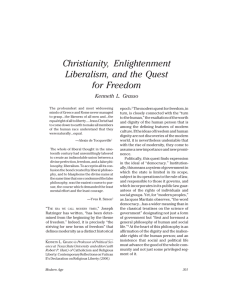Social 30-2 - SharpSchool
advertisement
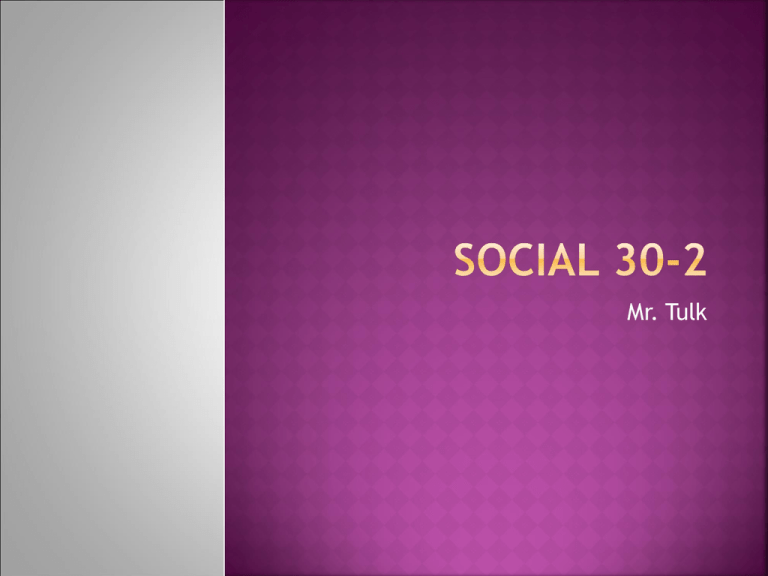
Mr. Tulk Liberalism Liberal Democracy. Economic Freedom Individual Rights and Freedoms Housekeeping Those of you that missed the Quiz. See me in Tutorial. Skipping quizzes is not an option. Review Again, which philosophers thought what? “Exploring Individualism” The Middle Ages - Year 500: People are defined by their social class. (peasant, clergy, nobility) The Individual is not valued and can not move in society unless they are clergy or nobility. People have little rights or freedoms. The individual was unimportant. Unless you knew somebody to help you, you didn’t move in society. This can be seen in the art of the time. People were not usually pictured. No real images or actual depictions. Only glorified images of religious figures. Called Icons or iconocalastic. People became more interested in studying the world around them. Their art became more true to life. They began to explore new lands. Renaissance is a French word that means “rebirth.” With these new ideas the individual became more important. 1. Self-Portrait -- da Vinci, 1512 • Artist • Sculptor • Architect • Scientist • Engineer • Inventor 1452 - 1519 One of the great thinkers of the Renaissance. Began creating art that focused on the actual form of man. Da Vinci’s most famous painting. Vitruvian Man created by Leonardo Da Vinci around the year 1487.[ Depicts a male figure in two with his arms and legs apart. Simultaneously inscribed in a circle and square. the picture represents a cornerstone of Leonardo's attempts to relate man to nature. Up until this point people were always seen as holy and unrealistic. After thinkers like Da Vinci society began to change. Books, Education, and Philosophy were growing among the upper classes. The Renaissance “Man” • Broad knowledge about many things in different fields. • Deep knowledge/skill in one area. • Able to link information from different areas/disciplines and create new knowledge. • The Greek ideal of the “well-rounded man” was at the heart of Renaissance education. People were still largely ruled by Kings and Queens and the Church. Rulers were ordained by God and had divine right. It was unacceptable to question authority or the church. So, even though people were getting more education, it was not available to the lower class. An ideology based on the importance of individual liberty and the values of individualism . Social 30-2 Chapter 2 Words Rule of Law Renaissance Enlightenment Social Contract Quick Review Printing Press: Invented by German inventor Johannes Gutenberg. increased mechanization remained the principal means of printing until the late 20th century Made book affordable. Religion Christian reform movement in Europe which begun with Martin Luther's Ninety-Five Theses. attempt to change the Catholic Church. involving the teaching and sale of indulgences. Let’s talk about indulgences. Now, Let’s move on! A time for questioning. The idea of the individual became more important. People began to question the rulers and the Church. Reason, not religion, should be the source of knowledge. Each individual had rights (if that “individual” was a Man that had Land!). People were capable of governing themselves. Science became more prominent in reasoning and not faith. Famous scientists like Isaac Newton came from this time. During the Enlightenment people began to question society and their place within it. After the Enlightenment people questioned government. A new political Ideology known as Liberalism formed. A central idea of liberalism is the focus on individual liberty. People moved away from rulers and more rights and freedoms. These ideas led to both of the major revolutions: The political upheaval during the last half of the 18th century. Thirteen of Britain's colonies in North America rejected the British monarchy became the sovereign United States of America. a period of political and social radical change in the history of France. the French governmental structure, previously an absolute monarchy underwent radical change to. based on Enlightenment principles of citizenship and inalienable rights. I think you know about the French Revolution. Liberal Democracies began to develop around the world in the 1900’s. Liberal Democracy is a form of government that guaranties the rights and freedoms of its citizens. Individuals are allowed to vote for a leader. guarantees certain political and civil rights of people in Canada from the policies and actions of all levels of government. It is designed to unify Canadians around a set of principles that embody those rights. The supreme law of the United States. Source of the legal authority underlying the existence of the United States of America. It provides the framework for the organization of the Government . Liberalism is based in the ideas of the enlightenment and is highly individualistic. However, it is also sometime collectivist. People agree to live by laws that protect the whole of society. Education and healthcare are supported by all with taxes. So, liberalism is a collection of individualist and collectivist ideas. All individuals and members of society had the same legal rights and freedoms. Does not depend on Gender, Race, or economic status. People have the right to own property. Government has no control over the economy or the market. Value is depended on Supply and demand. Individuals, not religion or government, determine society. All people are equal and should have rights and freedoms and a good quality of life. Political Roots of Liberalism In 1776 the American colonies declared themselves independent from Britain. The Right of all individuals were determined by the Declaration of Independence. It stated that all men are created equal. They have certain rights of life, liberty, and the pursuit of happiness. This went on to influence the French Revolution. Rule of Law and the Social Contract The Rule of law is that the law itself, and not the individual, has the greatest power and that all individuals are subject to the law. This idea comes for the Magna Carta. (Great Charter) The Magna Carta an English legal charter, originally issued in the year 1215. Protects the rights of the people Limits the power of the King of England. led to the rule of constitutional law Continued King John was forced to limit the amount of taxes he could collect. The King became subject to law. Over the years, the monarchy has given up more and more power. This document forged the way for modern democracy. Some questions. Locke and the new USA felt that people were capable of taking care and governing themselves. So, why do we need a government to govern us? They answered: A Social Contract. Social Contract Each individual in a society agrees to be governed so that they may gain the benefits of living in that society. Having access to things such as Police, Military, public services, etc… Individual Rights and Freedoms With the rise of liberalism countries passed laws to ensure equal rights for all people. But, limits must be placed on these rights. Can we think of how our rights should be limited? Let’s put some down here. Freedom of Speech One can not shout “fire” in a crowded room. may follow the "harm principle" or the "offense principle to prevent harm to others Hate Speech speech that attacks or disparages a person or group of people based on their: race, gender, age, ethnicity, nationality, religion, or lack there of, sexual orientation, gender identity, disability, language ability, ideology, social class, occupation, appearance (height, weight, skin color, etc.), mental capacity, and any other distinction that might be considered by some as a liability. Let’s look at page 51 Assignment On a piece of paper draw a timeline that explains the change from the ideology of the middle ages to the ideology of Liberalism.
